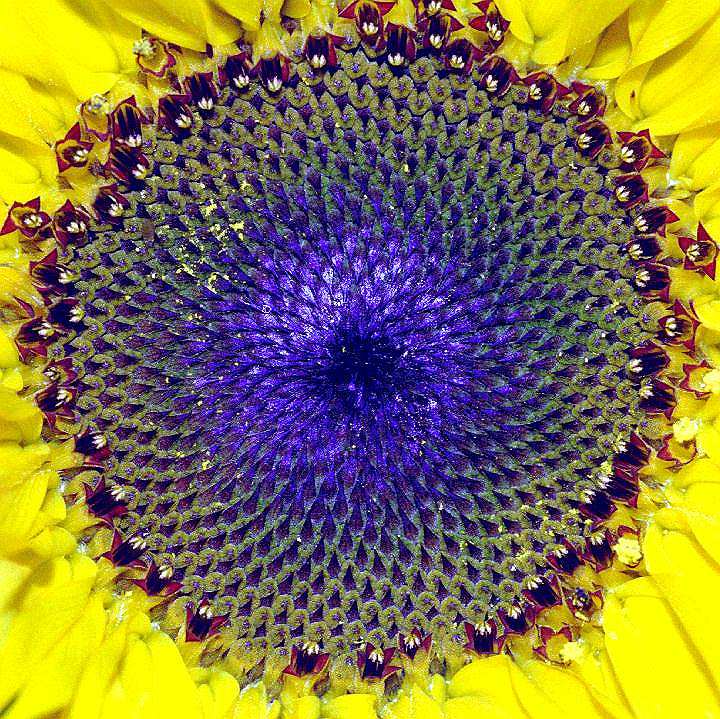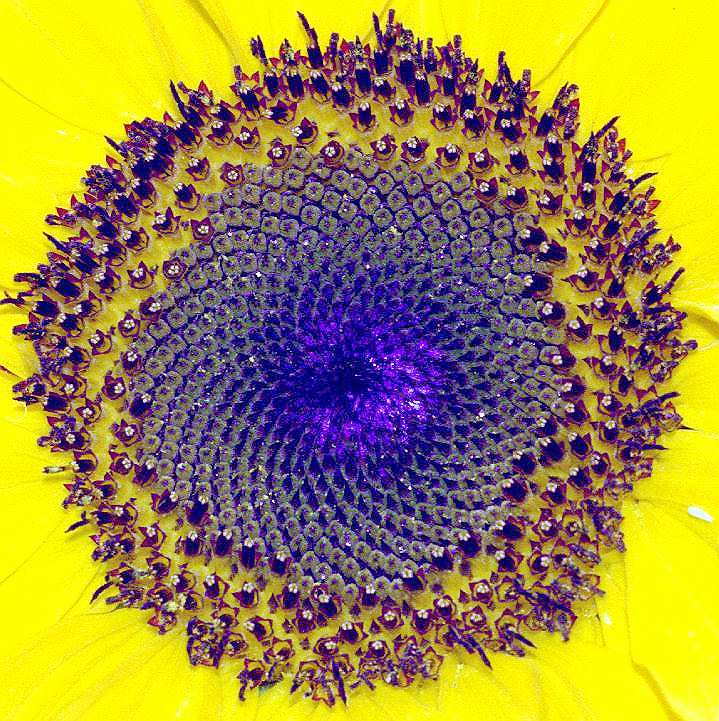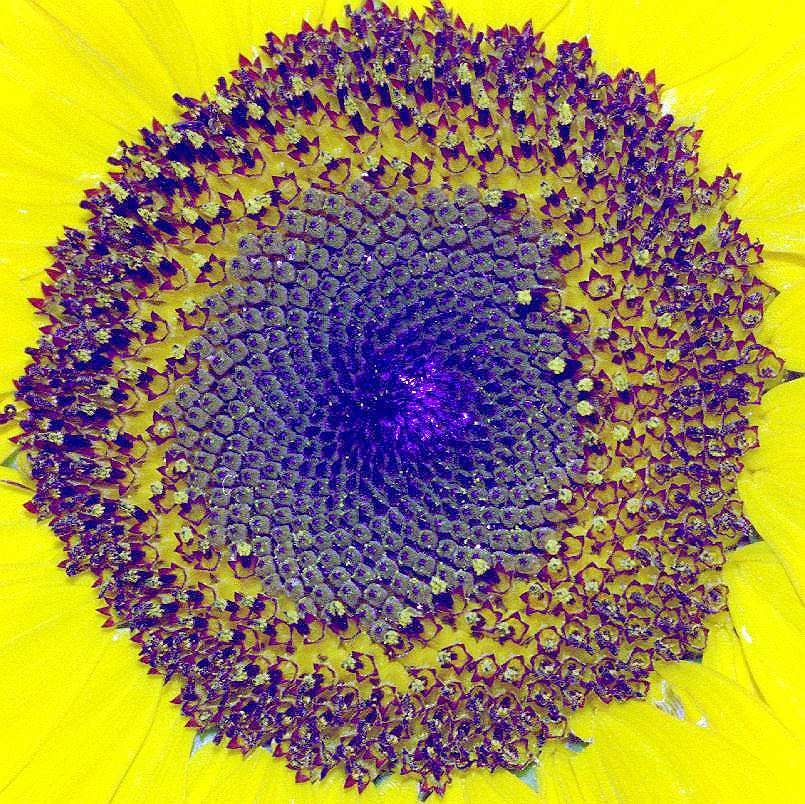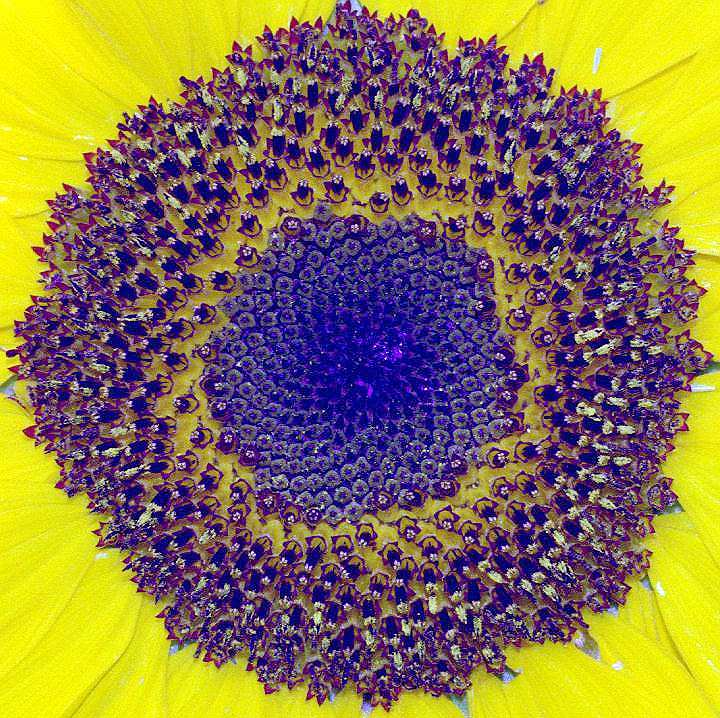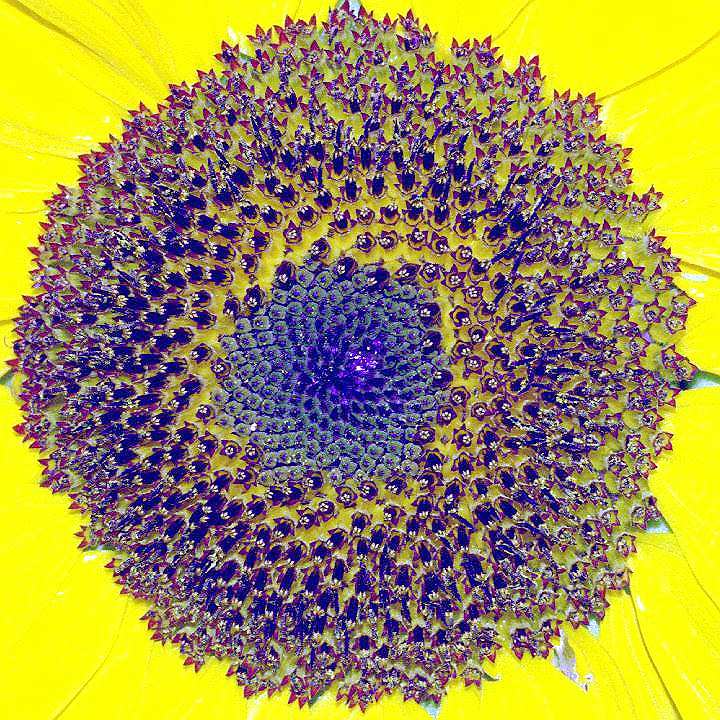The seeds of sunflowers display a two-dimensional pattern involving the Fibonacci sequence. The seeds of a sunflower form two spirals, called parastichies, one set eminating from the center in a clockwise direction, the other in a counter-clockwise direction. In most cases, the number of clockwise spirals and the number of counter clockwise spirals will be adjacent numbers of the Fibonacci sequence.
The parastichies image is linked from an excellent and informative web article, "Practical Procedural Modeling of Plants," by www.td-grafik.de.

